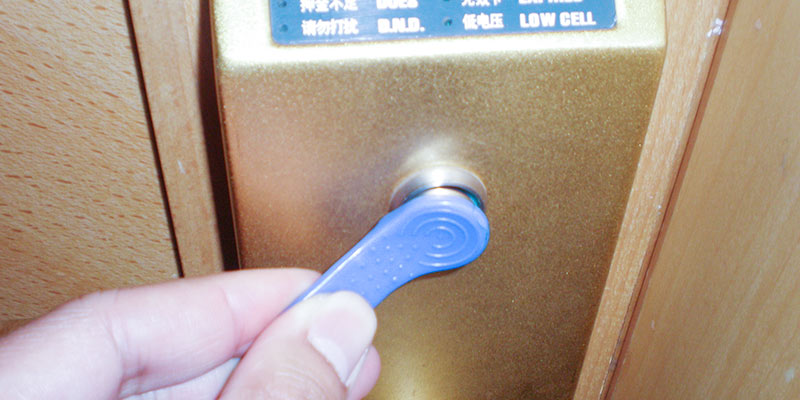
What is iButton?
The iButton is a computer chip packaged in a 16mm thick stainless steel housing. Thanks to its unique rugged casing, the latest information can be carried anywhere, along with people or objects. In fact, because the steel iButton housing is strong enough to withstand harsh environments indoors or outdoors, the iButton can be installed almost anywhere. The iButton is very compact and lightweight, and can be attached to a key chain, ring, watch or other personal item. It is ideal for controlling access to buildings and computers, asset management and various data records in daily life.
iButton composition
1. Housing and metal buckle
iButton utilizes its stainless steel ‘housing’ as an electronic communication interface, each housing having a data contact, called a “lid”, and a grounding contact, called a “bottom.” These contacts are all connected to the internal silicon. The lid is the top of the outer casing; the bottom of the box consists of the edge and bottom of the outer casing, including a flange that facilitates attachment of the button to any other item. These two contacts are isolated by a polypropylene retaining ring.
2. 1-Wire interface
Simply tap the iButton with the above two interfaces to communicate with it via the 1-Wire® protocol. The 1-Wire interface has two communication rates: 16kbps in standard mode and 142kbps in overdrive mode.
3. Address
The chip inside each iButton case has a unique address that is laser-engraved and unchangeable. This address (eg 2700000095C33108) can be used as the serial number or identifier for each iButton.
iButton version
Currently, the iButton product line includes more than 20 products, adding a variety of features to the basic buttons.
iButton provides the following types:
1.Only address
2. Memory
3. Real time clock
4. Security
5. Data logger
How to read and write iButton information?
The transmission of information between the iButton and the PC is achieved through a short contact with a transmission speed of up to 142 kbps. Simply use the iButton to tap the blue dot receiver or other iButton detector connected to your PC. Connect the blue dot receiver to the 1-Wire adapter on the free port of the PC with a cable.
The existing 1-Wire adapter supports USB ports, serial ports, and parallel ports. Blue dot receivers and 1-Wire adapters are inexpensive.
iButton is also the ultimate information carrier for AutoID and a variety of portable applications. All the latest handhelds and PDAs can communicate with iButton. For a complete list of portable devices that can communicate with iButtons, visit iButton Solutions Search.
What is the ruggedness of the iButton?
The silicon wafer inside the iButton is protected by a durable material – stainless steel. You can throw it on the ground, step on your feet, or scratch it at will. The iButton has been tested for wear and has a 10-year service life.
What can I do with iButton?
iButton is ideal for any application that needs to carry information with you or with you. The iButton can be attached to a keychain, watch or ring to authorize its owner to enter the building, using computers, instruments and transportation equipment. The iButton can be attached to a work tote to measure the entire process, such as manufacturing, product transfer, and maintenance, to increase productivity. Some iButton versions can store e-cash in small transactions, such as transportation systems, parking fees, and vending machines. iButton can also be used as an electronic asset tag to store the information needed to track valuable equipment assets.
What do I need to do to implement an iButton application?
Any iButton application consists of the following four basic parts. iButton
2. Host system: Can be a PC, laptop, PDA, or embedded system.
3. Read/write device, which can write information to the button or read information from the button. It can be the blue dot, pen detector or handheld device mentioned above.
4. Connect the iButton to the computer and generate the software layer of the required information in the desired format. Multiple software development tools (SDKs) are available for free download from the website. To get a list of SDKs and download links, see this page.
What advantages does iButton have over other technologies?
When developing an iButton solution, you might think of many complementary technologies. It may be barcodes, RFID tags, magnetic strips, proximity cards, and smart cards. Unlike barcodes and magnetic stripe cards, most iButtons can not only read but also write. In addition, iButton’s communication speed and product range far exceeds the simple memory that RFID typically uses. In terms of ruggedness, thin plastic smart cards are not as strong as the high-strength iButton.
